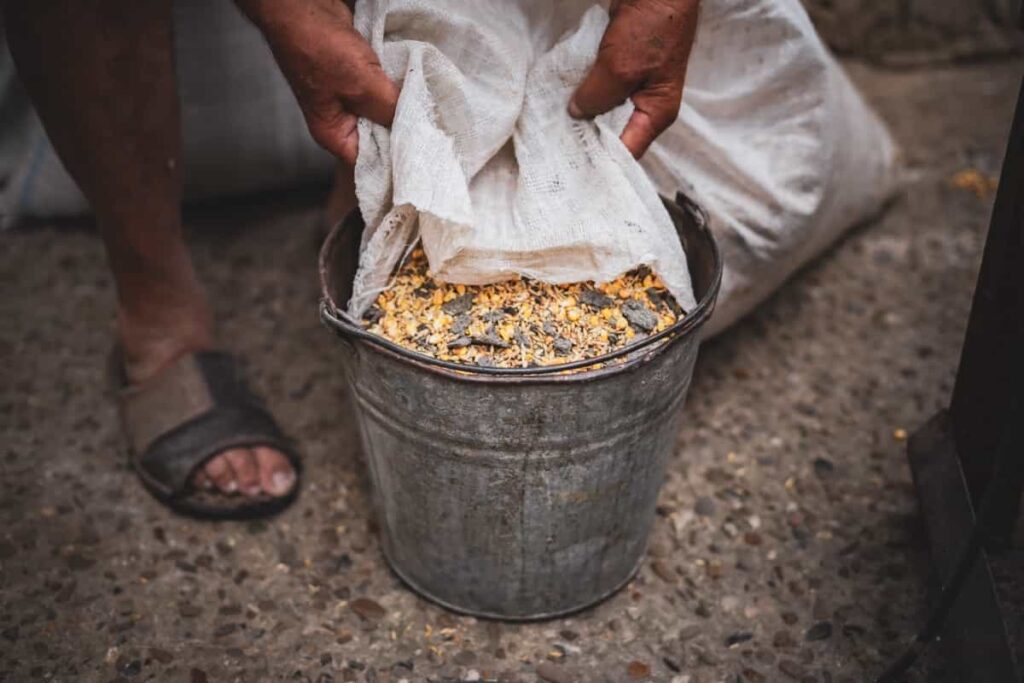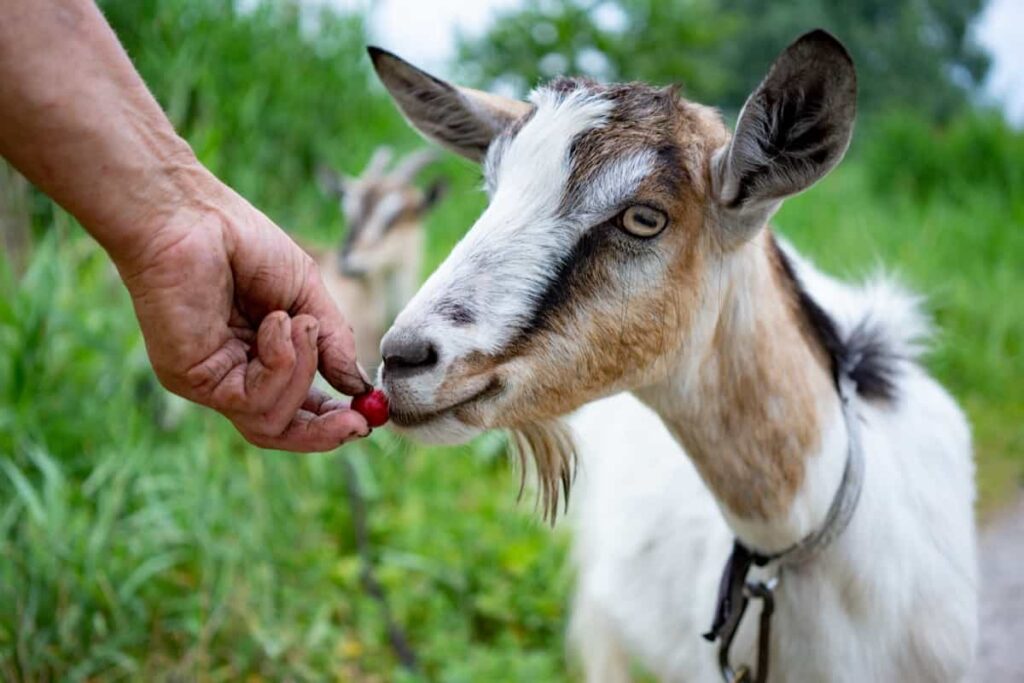Originating from Thüringen in central Germany, these goats are prized for their milk production capabilities. These goats thrive in various conditions, making them suitable for different environments. Their ability to produce quality milk makes them an attractive choice for dairy farmers looking to enhance their herds.

All You Need to Know About Thuringian Goat
History
The breed is a derivative of the German Improved Fawn goat and is primarily bred for its high-quality milk production. The Thuringian goat has been cherished for generations, known for its gentle demeanor and versatility on small farms. Its roots date back to traditional farming practices, where these goats played an integral role in providing sustenance for families.
Physical Characteristics
The Thuringian goat is a medium-sized breed known for its distinct physical characteristics. These goats have a sturdy build with a straight back and deep chest, giving them an elegant appearance. Their coat is typically short, dense, and of various shades of fawn or brown, providing them with excellent protection from the elements. With adult males averaging 55 kg and females at 48 kg, they stand elegantly with a wither height of around 78 cm for males and 74 cm for females.
The most striking feature of Thuringian goats is their unique horns that curve backward in an impressive manner adding to their charm. Their ears are medium-sized and erect, enhancing their alert and curious expression. With expressive eyes and a calm demeanor, these goats are not only beautiful but also easy to handle. Their legs are strong and well-built, allowing them to move swiftly across various terrains.
The hooves of Thuringian goats are hardy and well-shaped contributing to their agility. The physical attributes of these goats make them both aesthetically pleasing as well as functional for various farming purposes such as milk production or meat supply. Over time, the breed’s unique characteristics and adaptability have made it a popular choice among farmers looking to maintain sustainable agricultural practices while benefiting from their excellent milk-producing abilities.
Habitat and Range
The Thuringian goats thrive in a variety of habitats, from hilly regions to flat plains, as long as there is sufficient grazing land and protection from harsh weather conditions. They are known for their resilience, making them well-suited for various environments. These goats can be found across central Germany, particularly in the region of Thüringen where they have been traditionally bred for their milk production.
Their ability to graze on different types of vegetation allows them to inhabit diverse landscapes with ease. Thuringian goats are often seen roaming freely in open fields or pastures, enjoying the freedom to browse grasses, shrubs, and other plants. This natural behavior contributes to their overall health and well-being.
Feeding Habits
Thuringian goats eat grass, hay, grains, and sometimes supplements. They are excellent foragers and enjoy browsing shrubs and trees. Clean water is essential to keeping goats healthy and hydrated throughout the day. A balanced diet is important to meet the nutritional requirements for milk production. Monitoring their food intake ensures they are getting enough nutrients without overeating.
In case you missed it: Comprehensive Guide to Carpathian Goats: Breeding, Care, and Products

Feeding schedules should be consistent to establish a routine that the goats will come to expect. This helps maintain their digestive health and overall well-being. Additionally, offering occasional treats like fruits or vegetables can be a great way to bond with your Thuringian goats while providing them with extra nutrients. Observing your goats’ eating habits can also give you valuable insight into their health status. Make adjustments as needed based on their appetite and energy levels.
Breeding and Reproduction
When it comes to reproduction, timing is key – female goats typically come into heat every 18-24 days during the breeding season. It’s essential to observe their behavior and physical signs to determine the best time for mating. Introducing a buck into the herd for mating should be done carefully to prevent any injuries or stress among the animals.
Proper nutrition plays a major role in ensuring successful breeding outcomes, as both males and females need to be in good health for successful reproduction. Goat pregnancies usually last about 150 days, with proper care and monitoring required throughout this period. Understanding the intricacies of goat breeding can lead to healthier kids and stronger herds in the long run.
Health and Care
Regular check-ups by a veterinarian can help prevent and address potential issues before they escalate. Ensuring a clean living environment is essential for their well-being, as cleanliness plays a significant role in preventing diseases. Access to fresh water at all times is also crucial for their hydration needs.
In case you missed it: Ultimate Guide to Kinder Goats: Raising, Breeding, Feeding, Care, Milk, and Meat Production

Regular grooming not only keeps your goats looking neat but also helps in detecting any signs of parasites or skin issues early on. Trimming hooves regularly and providing shelter from extreme weather conditions are important aspects of caring for these animals. Prioritizing preventive measures and prompt treatment when needed will contribute to keeping your Thuringian goats healthy and happy.
Economic Importance
The Thuringian goat, with its milk production capabilities, is economically important for farmers and breeders alike. By raising these goats, individuals can tap into a market for high-quality dairy products that are in demand. The revenue generated from selling Thuringian goat milk can contribute to farms’ financial stability.
Moreover, the sale of Thuringian goat kids for breeding purposes presents another avenue of income generation. This breed is known for its hardiness and adaptability to various environments, so it is sought after by those looking to enhance their herds through crossbreeding programs. Additionally, the utilization of Thuringian goats in ecotourism activities such as farm visits or cheese-making workshops can further boost economic opportunities.
Raising Tips
Provide a balanced diet rich in fiber, vitamins, and minerals. Make sure they have access to fresh water at all times. Additionally, offer them quality hay or grass as their primary food source. Create a safe shelter to protect them from harsh weather conditions. Ensure that the housing is well-ventilated and clean regularly to prevent disease outbreaks.
Schedule veterinary check-ups to monitor the health of your goats and vaccinate them against common diseases. Pay attention to any signs of illness or distress and seek professional help if needed. Establish a routine grooming schedule to keep their coat clean and free from parasites. Regular grooming not only maintains their appearance but also promotes good hygiene practices among your herd.
Cultural Significance
Thuringian Goats have a rich cultural significance that goes beyond their practical uses. In Thüringen, Germany, these goats are often celebrated in local festivals and events. Their presence is deeply ingrained in the traditions of the region, symbolizing fertility and prosperity. Thuringian Goats are portrayed as symbols of resilience and adaptability. They are revered for their connection to nature and the agricultural way of life.
Artisans in Thüringen draw inspiration from these majestic creatures, incorporating their likeness into traditional crafts and designs. Thuringian Goat can be found adorning pottery, textiles, and even buildings in the area. The bond between the people of Thüringen and their goats is a testament to the enduring legacy of these animals in shaping the cultural identity of the region.
Keeping Thuringian Goats: Tips and Best Practices
Ensure your Thuringian goats have access to clean water, as hydration is key to their health and well-being. Provide a balanced diet rich in fiber, such as hay or grass, alongside commercial goat feed. Monitoring their nutrition is crucial for optimal growth and development. Additionally, secure fencing is a must to prevent escapes and protect them from predators. Regular health check-ups are vital to detect any potential health issues early on. Creating a comfortable shelter that offers protection from extreme weather conditions will ensure the happiness of your Thuringian goats.
Conclusion
Thuringian goats are easy to care for, requiring minimal maintenance compared to other livestock. Their adaptability to various climates and terrains makes them suitable for different farming environments. By raising Thuringian goats, you can contribute to preserving this unique breed’s genetic diversity. The importance of raising Thuringian Goats lies in their exceptional milk production capabilities.
- Types of Grass Growing for Goat Farm
- How to Train Goats for Milking: A Beginners Guide
- Goat Milking Practices and Equipment: A Beginner’s Guide
- Goat Farming for Fiber: Producing Mohair and Cashmere
- Maximizing Goat Milk Production: Tips for Dairy Goat Farmers
- Goat Farming as a Family Business: Strategies for Success
- Profitable Kenya Goat Breeds for Commercial Dairy and Meat Business
- Unlock the Secrets of Oberhasli Goat: Discover Raising and Management Practices
- Ultimate Guide to Myotonic Goats: Explore Profile to Raising